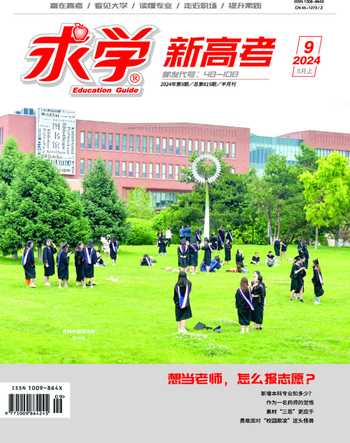人类首次探测到三颗类太阳恒星的恒星风
谢钰洪
An international research team led by a researcher from the University of Vienna has for the first time directly detected stellar winds from three Sun-like stars by recording the X-ray emission from their astrospheres(星状体), and placed restrictions on the mass loss rate of the stars via their stellar winds.
The researchers observed the spectral fingerprints of the oxygen ions(离子) with XMM-Newton and were able to determine the quantity of oxygen and ultimately the total mass of stellar wind emitted by the stars. For the three stars with detected astrospheres, named 70 Ophiuchi, epsilon Eridani, and 61 Cygni, the researchers estimated their mass loss rates to be 66.5±11.1, 15.6±4.4, and 9.6±4.1 times the solar mass loss rate, respectively. This means that the winds from these stars are much stronger than the solar wind, which might be explained by stronger magnetic activity of these stars.
“In the solar system, solar wind charge exchange emission has been observed from planets, and comets, and provides a natural laboratory to study the solar winds composition,” explains the lead author of the study, Kristina Kislyakova. “Observing this emission from distant stars is much more tricky due to the faintness of the signal. In addition to that, the distance to the stars makes it very difficult to separate the signal emitted by the astrosphere from the actual X-ray emission of the star itself, part of which is “spread” over the field-of-view of the telescope due to instrumental effects.
“We have developed a new algorithm to figure out the stellar and the astrospheric contributions to the emission and detected charge exchange signals originating from stellar wind oxygen ions and the surrounding neutral interstellar medium of three main-sequence stars. This has been the first time X-ray charge exchange emission from astrospheres of such stars has been detected. Our estimated mass loss rates can be used as a benchmark for stellar wind models and expand our limited observational evidence for the winds of Sun-like stars.”
(材料来自Sciencenews网站,有删改)
1. What can we say about the research?
A. It is a pioneering detection.
B. It is a difficult process.
C. It is a temporary success.
D. It is a massive development.
2. Why are the winds from the three stars much stronger?
A. More accurate observation method.
B. More powerful magnetic activity.
C. Larger amounts of oxygen.
D. Much bigger mass loss.
3. What is paragraph 3 mainly about?
A. The challenges of the observation.
B. The complexity of the solar system.
C. The limitations of the method.
D. The further explanation of the methods.
4. What does the underlined word “benchmark” in paragraph 4 refer to?
A. reference B. test
C. standard D. signal
1. A。解析:細节理解题。材料第一段提到“由维也纳大学的一名研究人员领导的一个国际研究小组首次通过记录三颗类太阳恒星天体的X射线发射,直接探测到它们的恒星风”,由此可知这次观测具有开创意义。A选项“这是一个开创性的观测”与材料内容相符,故选A。
2. B。解析:细节理解题。材料第二段最后一句提到“这意味着这些恒星的风比太阳风强得多,这可能是因为这些恒星的磁活动更强”,由此B选项“更强的磁场活动”与材料内容相符,故选B。
3. A。解析:主旨大意题。材料第三段共有三句话,第一句提到“在太阳系中,已经从行星和彗星上观测到了太阳风的电荷交换发射,并为研究太阳风的成分提供了一个自然实验室”,第二句和第三句提到“由于信号的微弱性,观测来自遥远恒星的这种发射要困难得多。除此之外,由于距离恒星的距离,很难将天体球体发射的信号与恒星本身的实际X射线发射分开,其中一部分由于仪器效应而‘扩散到望远镜的视野中”。由此可知第三段主要讲述进行该项观测存在的一些挑战。A选项“观测的挑战”与材料内容相符,故选A。
4. C。解析:词义猜测题。材料最后一段为研究人员对此次观测研究的评价,所猜词的句子提到“我们估计的质量损失率可以作为恒星风模型的基准,并扩展我们对类太阳恒星风的有限观测证据”。C选项“标准”与材料内容相符,故选C。

